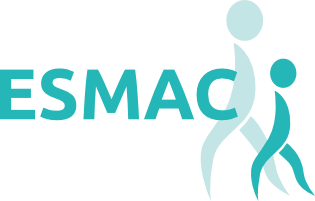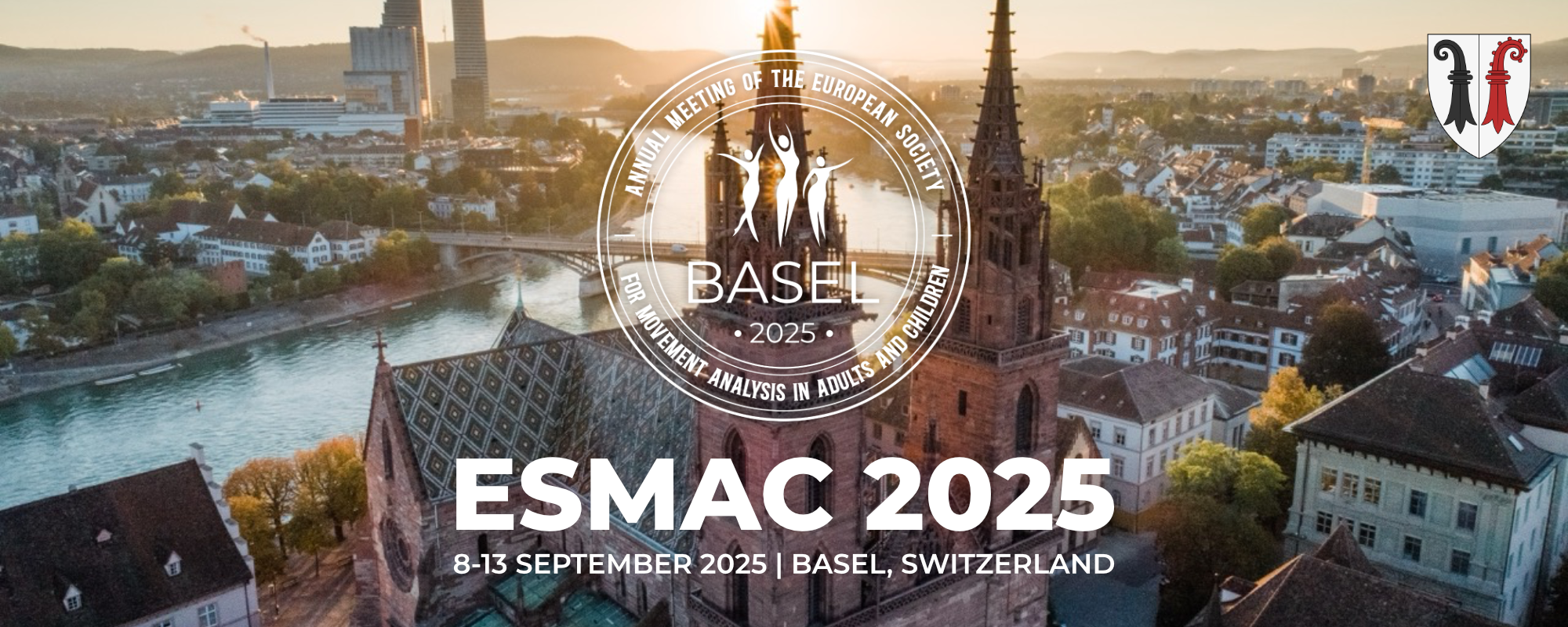Pre-Conference Seminars
Tuesday 9 September
Wednesday 10 September
The ESMAC Pre-Conference Seminars will be held in Fachhochschule Nordwestschweiz (FHNW), more information about the venue is here.
Please note that the Seminars run in parallel with the Gait Course.
Tuesday 9 September from 08:30 to 12:15
(S1): From Electromyography to High-Density Surface Electromyography (HDsEMG): New Opportunities for Easy and Advanced Analyses
1. Rationale and structure of the workshop:
High-Density surface Electromyography (HDsEMG) has undergone significant technological and methodological advancements, enabling the non-invasive study of individual Motor Unit behavior and providing direct insight into neural control of movement.
This workshop provides an in-depth exploration of HDsEMG, covering its theoretical foundations, clinical relevance, and practical applications. This session will highlight the unique advantages of HDsEMG over traditional bipolar EMG. Particular emphasis will be placed on its pioneering applications in clinical settings, including neuromuscular diagnostics and rehabilitation, its role in advancing assistive technologies, and its potential for enhanced clinical interpretation and robotic interfaces.
The program begins with a scientific introduction comparing traditional EMG to HDsEMG, highlighting its technological advancements and applications, including basic research, diagnostics, rehabilitation, and integration with assistive technologies (60 minutes). A practical session will follow, where participants learn how to acquire high-quality HDsEMG signals (75 minutes). The third session focuses on data analysis using openhdemg, a free and open-source framework for easy and reproducible analyses of Motor Unit properties [1]. The workshop concludes with a Q&A session to address doubts and explore challenges and future directions.
2. Key takeaway:
Participants will gain a clear understanding of the differences, pros, and cons of traditional EMG and HDsEMG. Furthermore, participants will obtain hands-on experience with data collection, and the ability to leverage open-source tools for advanced Motor Unit analysis.
3. Intended audience
This workshop is aimed at researchers and clinicians who would like to know the potential of HDsEMG and to integrate it into their work, potentially advancing neuromuscular research, rehabilitation practices, and human-machine interactions.
4. References
[1] Valli G, Ritsche P, Casolo A, Negro F, De Vito G. Tutorial: Analysis of central and peripheral motor unit properties from decomposed High-Density surface EMG signals with openhdemg. J Electromyogr Kinesiol. 2024 Feb;74:102850. doi: 10.1016/j.jelekin.2023.102850.
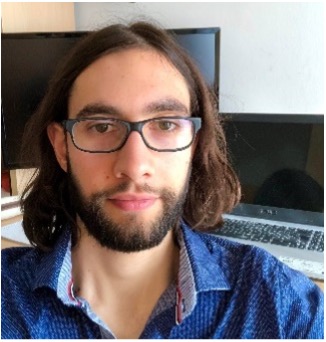
Giacomo Valli
University of Brescia, Italy
Click here to see short Biography
Giacomo Valli is a postdoc researcher at the University of Brescia (Italy) with the main focus on developing open-source tools for the analysis of Motor Unit behaviour in health and pathology. He obtained a PhD in biomedical sciences and an MSc in Sports Science. He is the creator and maintainer of openhdemg, an open source framework for the analysis of High-Density surface Electromyography recordings.
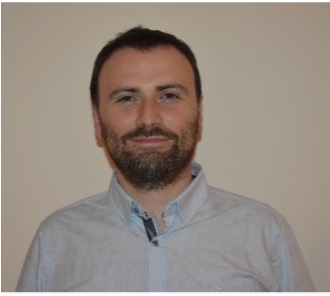
Eduardo Martinez-Valdes
University of Birmingham, UK
Click here to see short Biography
Eduardo Martinez-Valdes, PT, MSc, PhD, is an Assistant Professor in Musculoskeletal Physiotherapy at the University of Birmingham, UK. He began his physiotherapy studies at Universidad Mayor in Chile (2008) and completed his MSc and PhD in Clinical Exercise Science at the University of Potsdam, Germany, in 2017. His current research investigates neurophysiological mechanisms of musculoskeletal disorders and aging using advanced electrophysiological methods. He has published over 70 peer-reviewed articles across multiple disciplines and is supported by major organizations including The Physiological Society, Muscular Dystrophy UK, Orthopaedic Research UK, the Wellcome Trust, and CMAR.
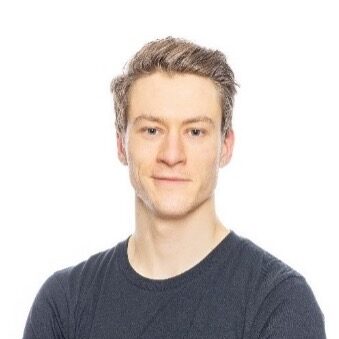
Paul Ritsche
University of Basel, Switzerland
Click here to see short Biography
Paul Ritsche is a PhD student at the Department of Sport, Exercise and Health at the University of Basel. His research focuses on the automated analysis of muscle architecture from ultrasound images, with a particular interest in how muscle geometry reflects function. He is the main developer of the open-source tools DL_Track_US and DeepACSA, supporting reproducible and accessible muscle ultrasonography image analysis. His recent work includes the use of 3D ultrasound for muscle volume reconstruction and modelling as well as building an open source data based for musculoskeletal ultrasonography images. Paul is also involved in teaching biomechanics and motor control and is an active member of several reproducibility and open science communities.
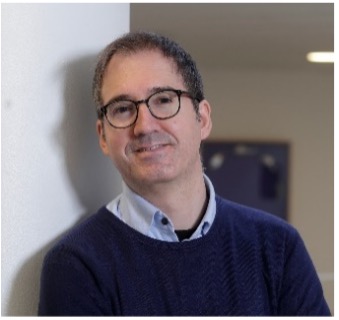
Francesco Cenni
Neuromuscular Research Center at University of Jyväskylä, Finland
Click here to see short Biography
Francesco Cenni, Postdoc: I received my doctorate in Mechanical Engineering from KU Leuven in 2018. My PhD work contributed to the development of a 3D ultrasound technique for measuring muscle-tendon morphology, providing data in a format comparable to magnetic resonance imaging. These working experiences triggered my curiosity also about clinical problems beyond purely technical challenges. In 2021, I was awarded the prestigious Marie Skłodowska-Curie Postdoctoral Fellowship at the University of Jyväskylä (Finland). This work deepened my focus on musculoskeletal properties in cerebral palsy, particularly on how their remodeling influences daily activities such as walking. After further expanding my scientific knowledge through research positions at KU Leuven and the University of Brescia, I am now ready to develop my current research line. My aim is to integrate different perspectives on muscle properties by advancing our understanding of muscle remodeling and its impact on human movement.

Romina Ledergerber
PhD Student at University of Basel, Switzerland
Click here to see short Biography
Romina Ledergerber’s research focuses on neuromuscular mechanisms across various contexts, with a particular emphasis on maturation-related responses to load in children and adolescents. Her PhD centers on a randomized controlled trial involving resistance training in prepubertal children, investigating adaptations in motor unit recruitment patterns and fatigability. By applying high-density electromyography in a pediatric training context – a novel and forward-thinking approach – she aims to deepen the understanding of neuromuscular development in youth and contribute to more effective health prevention strategies starting in early life.

Francesco Negro
Università degli Studi di Brescia, Italy
Click here to see short Biography
Prof. Francesco Negro received the M.Sc. degree in telecommunication engineering from the Politecnico di Torino, Torino, Italy, in November 2005, and the Ph.D. degree in biomedical engineering from Aalborg University, Aalborg, Denmark, in April 2011. From 2006 to 2010, he was a Research Assistant and Ph.D. Fellow at Aalborg University. From 2011 to 2016, he was a Postdoctoral Researcher at the Institute of Neurorehabilitation Systems, University Medical Center Göttingen, Georg-August University, Germany, within the Bernstein Focus Neurotechnology and Bernstein Center for Computational Neuroscience. From 2016 to 2018, he was a Marie Curie Individual Fellow on the project NeuralCon at the Department of Clinical and Experimental Sciences, Università degli Studi di Brescia, Italy, where he is now a Full Professor of Kinesiology. He is currently the vice president of ISEK. His research interests include applied physiology of the human motor system, signal processing of intramuscular and surface electromyography, and modeling of spinal neural networks.
Tuesday 9 September from 13:15 to 17:00
(S2): Heterogeneous Protocols and Multimodal Data in Clinical Motion Analysis: Towards Harmonization for Collaborative Research
Heterogeneous Data in Motion Analysis: Towards Harmonization for Collaborative Research
Over the past decades, motion analysis has become a cornerstone in biomechanics and clinical gait analysis, enabling detailed insights into human movement. However, the increasing diversity of data sources—ranging from optical motion capture and EMG to inertial sensors and virtual environments—has led to a fragmented landscape. This heterogeneity, compounded by the absence of widely adopted standards for data formats, metadata, and sharing protocols, significantly hinders collaborative and reproducible research.
This seminar addresses the urgent need for harmonization and standardization in motion analysis workflows across laboratories and disciplines. We will explore methodological and practical strategies to align data collection, formatting, and sharing—focusing on interoperability, data quality, and clinical relevance.
Key topics will include:
Strengths and limitations of the file formats used in modern motion analysis pipelines.
- Validity and Reliability evaluation of biomechanical models, focusing on the Conventional Gait Model 2 (CGM2) and modelling specifications.
- Implementation of FAIR principles (Findable, Accessible, Interoperable, and Reusable) in motion analysis workflows: what should be the minimum viable information to reuse data?
- Application of AI algorithms to harmonized datasets for automated foot contact detection.
The seminar will also highlight and critically examine key standardization initiatives shaping the field (Camarc, ISB, MoveD, ESMAC, CMAS, …) and proposition of practical solutions to use them.
To bridge theory and practice, the session will include live demonstrations of Moveck’s tools. Participants will have the opportunity to test these tools on real-world datasets and experience firsthand how harmonized workflows can enhance reproducibility, transparency, and efficiency.
This session is designed for researchers, clinicians, and data scientists in human movement science who are committed to building interoperable, collaborative infrastructures for biomechanical data.
Organizers:
Fabien Leboeuf (Nantes Hospital, France)
Arnaud Barré (Moveck Solution inc, Canada)
Stéphane Armand (University of Geneva Switzerland)
Bernhard Dumphart (St. Pölten University of Applied Sciences, Austria)
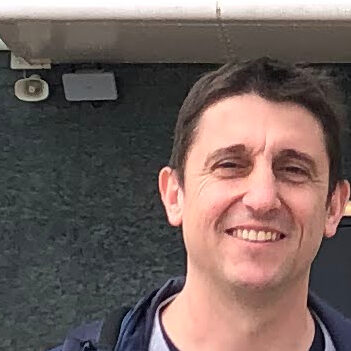
Fabien Leboeuf
Nantes University Hospital, France
Click here to see short Biography
Fabien Leboeuf is a hospital-based research engineer, in charge of the motion laboratory of Nantes University Hospital, France. His work focuses on three-dimensional gait analysis, biomechanical modeling, and motion capture technologies, with a strong interest in improving clinical decision-making through methodological innovation and open-source tools. He is the developer of the CGM2 (Conventional Gait Model 2), a biomechanical modeling framework integrated into leading commercial motion analysis systems. His current interests include data harmonization, standardization of motion analysis protocols, and the integration of wearable sensors and AI-based methods into clinical workflows.

Arnaud Barré
Chief Executive Officer and founder of Moveck Solution inc.
Click here to see short Biography
Arnaud Barré is the Chief Executive Officer and founder of Moveck Solution inc., based in Quebec City, Canada. He earned his PhD in Informatics and Communication in 2014 from the École Polytechnique Fédérale de Lausanne (EPFL), Switzerland. Since 2008, Arnaud has been actively involved in the development of software frameworks dedicated to biomechanics and motion analysis. His early contributions include the Biomechanical ToolKit (BTK) project, followed by Mokka and pyCGM2. His research work has consistently focused on creating efficient, modular technologies that can be seamlessly integrated into motion analysis workflows, accelerating routine processes and enabling innovations. Through Moveck, Arnaud continues to pursue the same vision, by leading a team of skilled professionals and fostering strong collaborations with the motion analysis community. Moveck is deeply committed to developing a new generation of software applications that not only address today’s clinical and research needs, but also support the ongoing creation of future-ready tools. By facilitating the transition from established methodologies to emerging approaches, Moveck aims to ensure the continuity of research and the long-term sustainability of motion analysis practices. With over 15 years of experience in motion analysis and data harmonization, Moveck has emerged as a key player to propose solutions related to clinical gait analysis standardization.

Stéphane Armand
University of Geneva (UNIGE)
Click here to see short Biography
Stéphane Armand is an Assistant Professor at the Faculty of Medicine, University of Geneva (UNIGE), and Director of the Kinesiology Laboratory at the Geneva University Hospitals (HUG). He earned his PhD in Biomechanics in 2005 in Valenciennes, France. Since joining UNIGE and HUG, his work has focused on improving the diagnosis and treatment of pathological movement, with a particular emphasis on gait disorders. His work bridges biomechanics, neurosciences, and translational clinical science to advance care for patients with motor impairments.
Prof. Armand leads a multidisciplinary team of around 15 researchers and clinicians. He is actively involved in several interdisciplinary projects that integrate neuromechanical modeling and machine learning—aimed at simulating pathological gait and supporting surgical decision-making for children with cerebral palsy.
A strong advocate of open science and collaboration, Prof. Armand serves as an elected board member of the European Society for Movement Analysis in Adults and Children (ESMAC), where he contributes to standardizing clinical gait analysis practices.
With over 180 peer-reviewed publications, Prof. Armand is recognized as a leading figure in clinical gait analysis.”
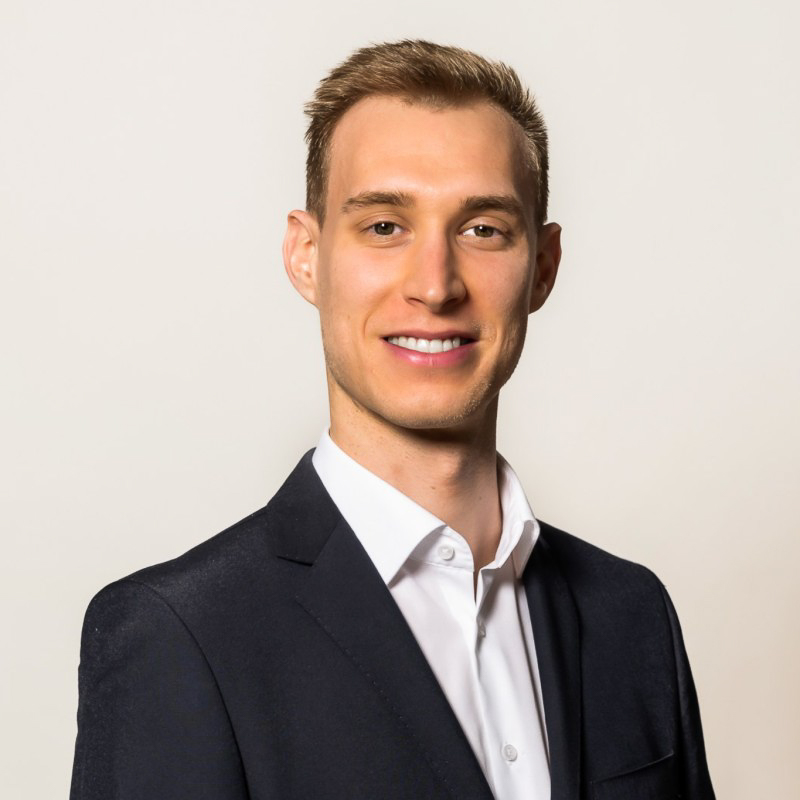
Bernhard Dumphart
St. Pölten University of Applied Sciences in Austria
Click here to see short Biography
Bernhard Dumphart is a researcher at the Center for Digital Health and Social Innovation at St. Pölten University of Applied Sciences in Austria. He is currently pursuing his doctoral studies at the University of Vienna, focusing on the integration of human gait analysis and artificial intelligence. His research centers on the development, validation, and implementation of a standardized method for gait event detection that can be applied across multiple gait laboratories and accommodate various gait patterns.
Wednesday 10 September from 9:30-10:30 and 11:00-12:30
(S3): ESMAC meets BMT on robotic rehabilitation. BMT: Joint Conference of the Swiss (SSBE), Austrian (ÖGBMT) and German (VDE DGBMT) Societies for Biomedical Engineering
ESMAC meets BMT about Robotics for rehabilitation will be organised around two eminent keynote lecturers in the field: Prof. Robert Riener and Prof. Stanisa Raspopovic. Don’t miss an opportunity to hear from top researchers in this field!
Rehabilitation robotics has been established in the late 20th century. The field originated from mechanical devices designed for dangerous environments like nuclear facilities and military use. These early developments paved the way for more sophisticate robotic devices for rehabilitation. Since its early times, the field has been evolving significantly from devices that move patients for mobilization purposes and for relieving therapists from exhausting physical work. Since then, new control concepts have been developed such as assist-as-needed, rehabilitation devices are available from gait to arm rehabilitation. Currently, we see trends more in directions of wearables, fusion of humans with their devices, and combination of medication, stimulation, and robotic support.
Key topics will include:
- The two keynote lectures will give insight into exoskeletons of different forms and applications to interfacing humans with machines.
- The seminar also hosts talks on new sensing concepts for stimulation, vibrotactile feedback in prosthesis, recognition of emotional responses, and observation of isometric actions to avoid motor resonance.
Organizer: Georg Rauter (University of Basel, Switzerland)
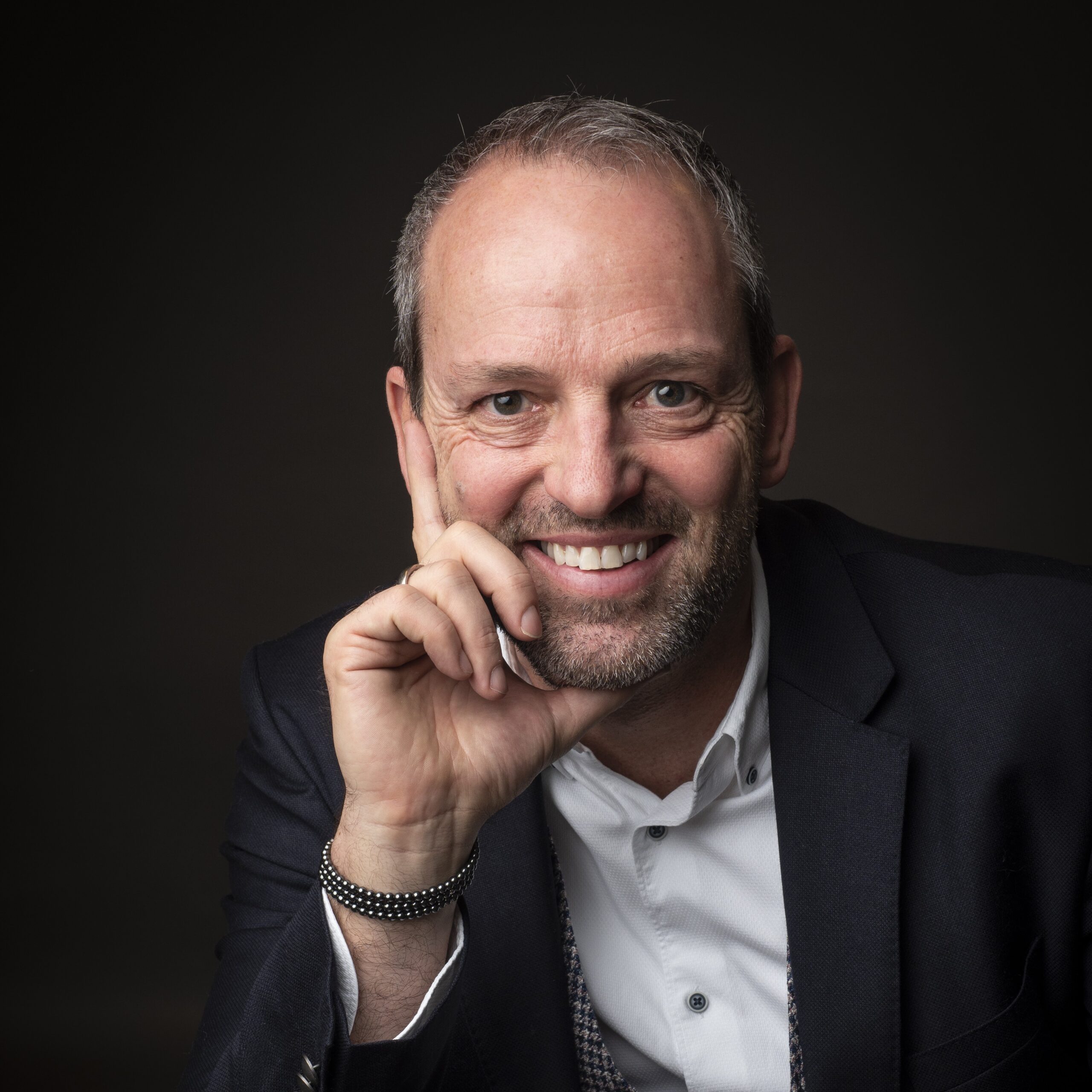
Robert Riener
Sensory-Motor Systems Lab, ETH Zurich, Switzerland
Click here to see short Biography
Robert Riener is full professor of Sensory-Motor Systems at ETH Zurich and full professor of medicine at the University of Zurich, Switzerland. He obtained a Dipl.-Ing. degree in mechanical engineering in 1993 and a Dr.-Ing. degree in biomedical engineering 1997, both from TU München, Germany. Riener has published more than 500 peer-reviewed articles, 36 book chapters and filed 26 patents. He is the initiator and organizer of the Cybathlon, president of ICORR, AAAS Leshner Fellow, Thomas Mann Fellow, and he obtained more than 30 personal distinctions, including an honorary doctor degree from University of Basel.
Click here to see the short Abstract
Exoskeletons for therapy and assistance
Exoskeleton robots can be very useful to restore movement abilities in two ways. First, they can promote neurorehabilitation as training devices after neurological injuries such as spinal cord injury (SCI), traumatic brain injury and stroke. Second, they can be used as assistive devices to support patients or elderly people with motor impairments in daily life situations. However, previous solutions were too bulky, too heavy, and with too little battery power. Furthermore, joint misalignments often lead to mechanical stress in the attachment points, and patient engagement and motivation are limited. These disadvantages result in discomfort and unsatisfactory performance. This talk will present new solutions and future trends of stationary and wearable exoskeleton devices that are more convenient than previous devices and provide patient-cooperative control strategies in order to better engage the patient during the movement. A new soft, lightweight, and under-actuated tendon-driven exo-muscular system makes the technology wearable so that it provides more mobility during therapeutic training in hospitals and higher comfort and performance for daily use in home and work environments. Different systems have been developed for the support of the lower extremities (“MyoSuit”) and the upper extremities (“MyoShirt”). They have been tested in many patients with different kinds of muscle weaknesses, e.g., paraparesis after SCI, hemiparesis after stroke, Multiple Sclerosis, different kinds of muscle dystrophies, children and adolescents with Cerebral Palsy, and with patients with heart failure.
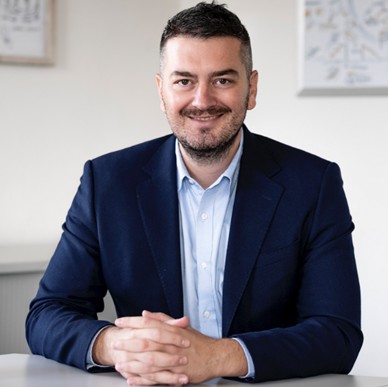
Stanisa Raspopovic
Center for Medical Physics and Biomedical Engineering and Comprehensive Center for Artificial Intelligence in Medicine, MedUni Vienna, Austria
Click here to see short Biography
Stanisa Raspopovic has been a Full Professor of Biomedical Engineering at Center for Medical Physics and Biomedical Engineering and Comprehensive Center for Artificial Intelligence in Medicine, MedUni Vienna, Austria, since 2024. He was previously an Assistant Professor of Neuroengineering at ETH Zurich and a Senior Scientist at EPFL in Lausanne, Switzerland. His research interest is focused on the development of innovative methods for treatment of neurologically disabled persons. In particular, he develops mechatronic systems directly interfacing the environment with the residual nervous system. Stanisa achieved the groundbreaking translational research results in the field of neural stimulation in patients with amputations, diabetes and pain. He has substantial international experience in research in neural engineering culminating with the award of the Science & PINS Prize in Neuromodulation 2021 and ETH Latsis Prize 2021. He won multiple prestigious Euriopean grants such as ERC Starting Grant in 2018 and ERC Consolidator and Proof-of-concepts Grants in 2023.
Click here to see the short Abstract
Interfacing men and machines for health benefits
Advances in nervous system interfacing present a promising venue for rehabilitation of individuals with different neurological disabilities. Subjects with SCI, pain or diabetes have reduced independence, which can induce a sedentary lifestyle promoting disease development and hindering reinsertion into society, while the neuropathic pain is common and poorly managed with current medications. Despite a wide range of possibilities for human-machine interfacing, the nature of the optimal human-machine interaction remains poorly understood. Knowledge gained from in-silico modelling of targeted neural structures can inform an optimized design of such interfacing, therefore we develop the exact models of different nerves, enabling for AI-based personalized treatments. We have pioneered a human-machine systems that translates artificial sensors’ read-outs into “language” understandable by the nervous system. The “smart orthosis” for diabetics “speaks” to their residual healthy nerves while diminishing pain. Combination of neuro-stimulating sleeve and exoskeleton restores the independence to highly disabled SCI and stroke patients. Their effects at the brain level were evaluated, observing important benefits.
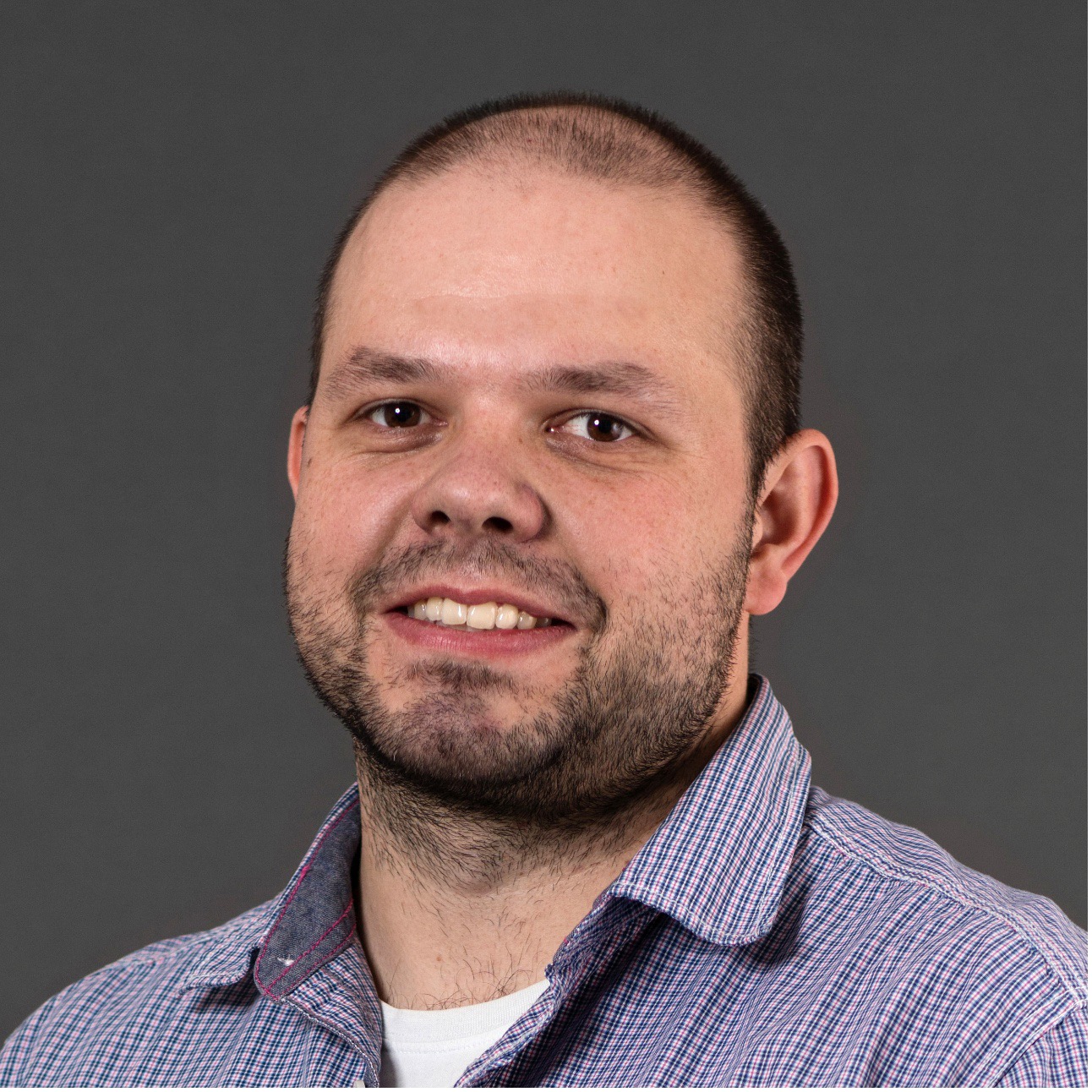
Georg Rauter
Department of Biomedical Engineering, University of Basel, Switzerland
Chair of the session
Click here to see short Biography
Georg Rauter is an Associate Professor at the University of Basel’s Department of Biomedical Engineering, where he leads the Bio-Inspired RObots for MEDicine Laboratory (BIROMED-Lab). His research focuses on developing bio-inspired robotic and mechatronic systems for medical applications, such as in rehabilitation and surgery. In rehabilitation robotics, Prof. Rauter has a particular emphasis on the FLOAT robot. The FLOAT is the world’s first 3D overground gait rehabilitation robot that facilitates safe gait training within different tasks and allowing to use different gait aids at the same time and has been brought to market by Prof. Rauter together with the SCI Center at the Balgrist, University of Zurich, and the company Lutz Medical Engineering. In surgical robotics, Prof. Rauter’s main focus is on minimally invasive semi-autonomous robotic surgery for laser ablation of hard tissue, such as bone or cartilage. In general, he is interested in advancing the field of medical robotics and its translation to the patient through industry. In addition to his research, Prof. Rauter is active in the academic community, such as IftoMM, the Swiss Robotics Association, and CURAC.

Lauren Chee
BIROMED-Lab at the University of Basel
Co-chair of the session
Click here to see short Biography
Dr. Lauren Chee is a currently a postdoctoral researcher at the BIROMED-Lab at the University of Basel. She earned her PhD at the ETH Zürich where she explored the use of electrical stimulation to restore lost sensation in neuropathic patients. In Basel, she is now working on further developing robotic systems for use in neurorehabilitation and scoliosis correction surgery.
Wednesday 10 September from 13:15 to 17:00
(S4): From Diagnosis to Decision: 3D Gait Analysis in Flatfoot Management
Harald Böhm Orthopaedic Hospital for Children, Aschau, Germany (Support ESMAC), Chakravarthy U Dussa Department of Orthopaedics and Trauma Surgery, LMU University Hospital, Munich, Germany (Support ESMAC), Małgorzata Syczewska, Department of Rehabilitation, The Children’s Memorial Health Institute, Warszawa, Poland, Julie Stebbins University of Oxford, Nuffield Department of Orthopaedics- Rheumatology and Musculoskeletal Sciences, Oxford, United Kingdom
Themes of the seminar:
Flatfoot (FF) is one of the most common pediatric foot deformities and are often asymptomatic. The complexity of the flatfoot lies in its varying expressions from being flexible – to partly flexible – to completely rigid. Its 3-dimenstional nature with predominance in one or more planes poses additional challenge, not only to understand the deformity but also its treatment. Static assessments often fail to reflect the impact of muscular forces, particularly during gait [1]. As a result, dynamic evaluation – especially using 3D gait analysis – has become essential in understanding the relationship between deformity, dysfunction, and compensatory movement patterns [2].
This pre-conference seminar offers an evidence-based overview of FF, covering its classification, functional implications, and current treatment strategies [3]. A particular focus will be on the application of dynamic gait analysis and intersegmental foot modeling to inform clinical decision-making in both conservative and surgical contexts [4]. Case studies will demonstrate how these tools translate into effective, real-world interventions.
By the end of the seminar, participants will understand normal foot biomechanics and how they are altered in FF, be able to differentiate between clinical classifications and their implications, discuss evidence-based treatment options, and interpret gait disturbances using 3D motion analysis to support therapeutic decisions.
Programme of the seminar:
1. Understanding Natural Foot Function and the Biomechanical Consequences of FF (Böhm)
2. Applying 3D Multi-Segment Foot Modeling in Clinical Practice (Stebbins)
3. Defining and classifying FF: Clinical Frameworks and Their Relevance to Treatment (Böhm)
4. Integrating Motion, Clinical, and Plantar Pressure Data for Evidence-Based FF Management (Dussa)
5. Identifying and Interpreting Gait Disturbances in Children with FF(Syczewska)
6. Case-Based Applications of Dynamic Assessment in the Management of FF (All)
References:
1. Böhm H, Döderlein L, Fujak A, Dussa CU. Is there a correlation between static radiographs and dynamic foot function in pediatric foot deformities? Foot Ankle Surg 2020; 26(7):801-9.
2. Böhm H, Stebbins J, Kothari A, Dussa CU. Dynamic Gait Analysis in Paediatric Flatfeet: Unveiling Biomechanical Insights for Diagnosis and Treatment. Children (Basel). 2024;11(5):604.
3. Boryczka-Trefler A, Kalinowska M, Szczerbik E, Stępowska J, Łukaszewska A, Syczewska M. Comparison of 2 Conservative Treatment Approaches for the Flat Foot in Children Aged 5 to 10: Foot Orthoses Versus Foot Orthoses Supplemented With Zukunft-Huber Manual Therapy. Clin Pediatr (Phila). 2024; 63(3):304-312.
4. Uhan J, Kothari A, Zavatsky A, Stebbins J. Using surface markers to describe the kinematics of the medial longitudinal arch. Gait Posture. 2023; 102:118-124.

Harald Boehm
Orthopedic Hospital for Children in Aschau, Germany
Click here to see short Biography
Harald Boehm is Director of the Gait Laboratory at the Orthopedic Hospital for Children in Aschau, Germany, and Professor of Biomechanics in the Orthobionics program at the University of Applied Sciences and Arts in Göttingen. He holds a PhD in physics and completed his postdoctoral qualification at the Technical University of Munich. He serves on the executive board of the German Clinical Movement Analysis Society (GAMMA) and is an Associate Editor for the journal Gait & Posture. His work focuses on sports technology, musculoskeletal simulation, orthotic evaluation in cerebral palsy, assessment of foot function, and clinical gait and running analysis.
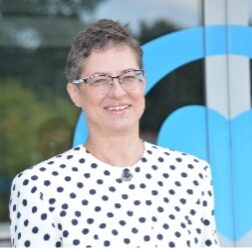
Małgorzata Syczewska
The Children’s Memorial Health Institute in Warszawa, Poland
Click here to see short Biography
Małgorzata Syczewska is a professor in the Department of Rehabilitation at The Children’s Memorial Health Institute in Warszawa, Poland. Her research is focused on clinical biomechanics, especially movement and balance analysis, for better diagnostics and assessment of treatment outcomes in pediatric patients.

Julie Stebbins
Oxford Gait Laboratory, United Kingdom
Click here to see short Biography
Julie is a clinical scientist working at the Oxford Gait Laboratory and within the Nuffield Department of Orthopaedics, Rheumatology and Musculoskeletal Sciences, University of Oxford. Her research primarily focuses on biomechanics of the foot and ankle. More recently, she has been involved in setting up gait analysis services in Ethiopia and other countries in sub-Saharan Africa.
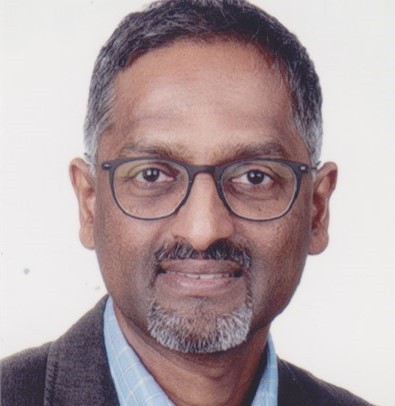
Chakravarthy U Dussa
University Hospital Großhadern, Ludwig-Maximillians University, Germany
Click here to see short Biography
Chakravarthy U Dussa practices the entire spectrum of paediatric orthopaedic surgery since 19 years and is currently working at University Hospital Großhadern, Ludwig-Maximillians University, Munich, Germany. He has 17 years of experience in the application of gait analysis and has keen interest in studying gait characteristics in children with neurogenic and non-neurogenic conditions. His special interest lies in understanding biomechanics of foot, and in the treatment of foot deformities in children.
